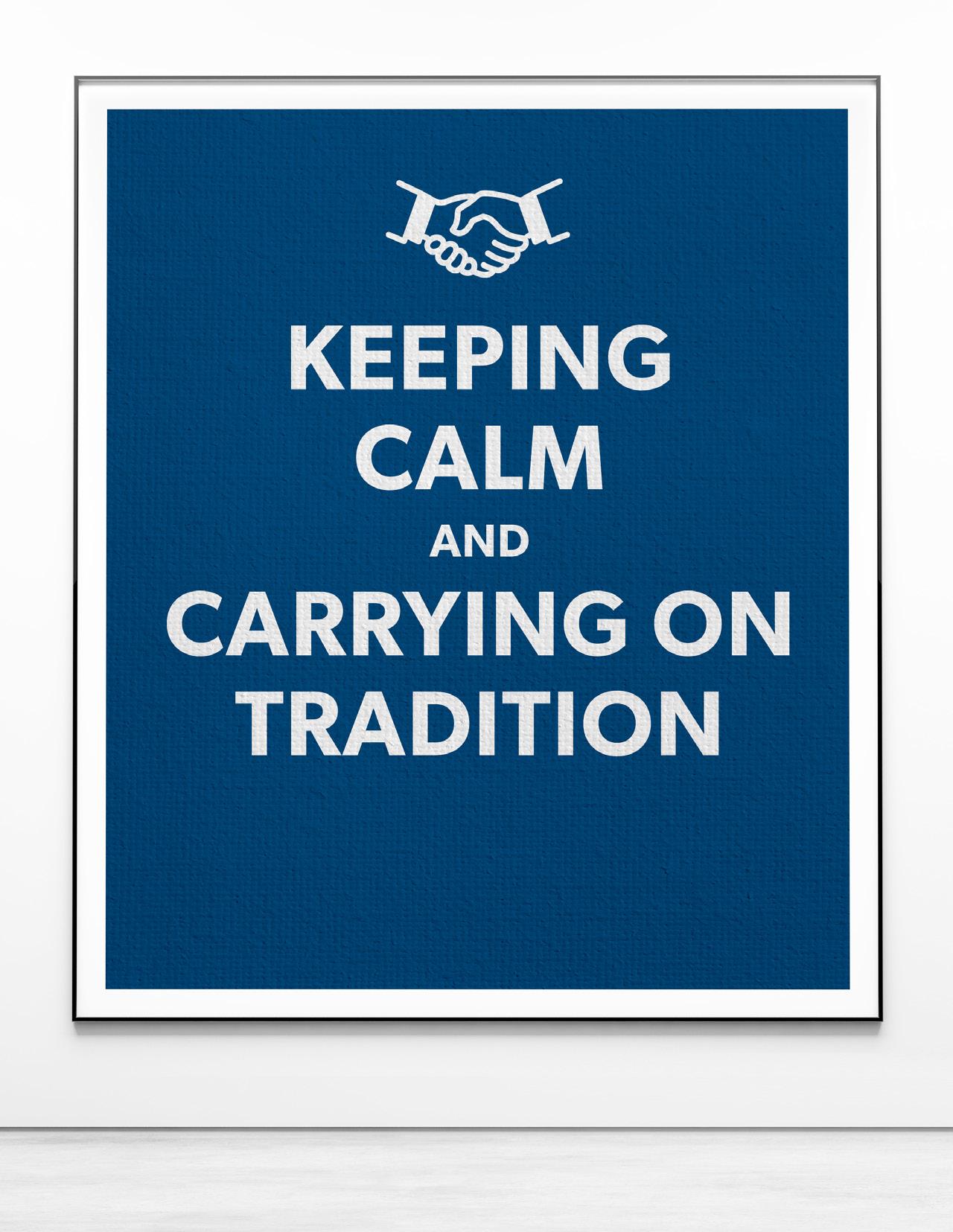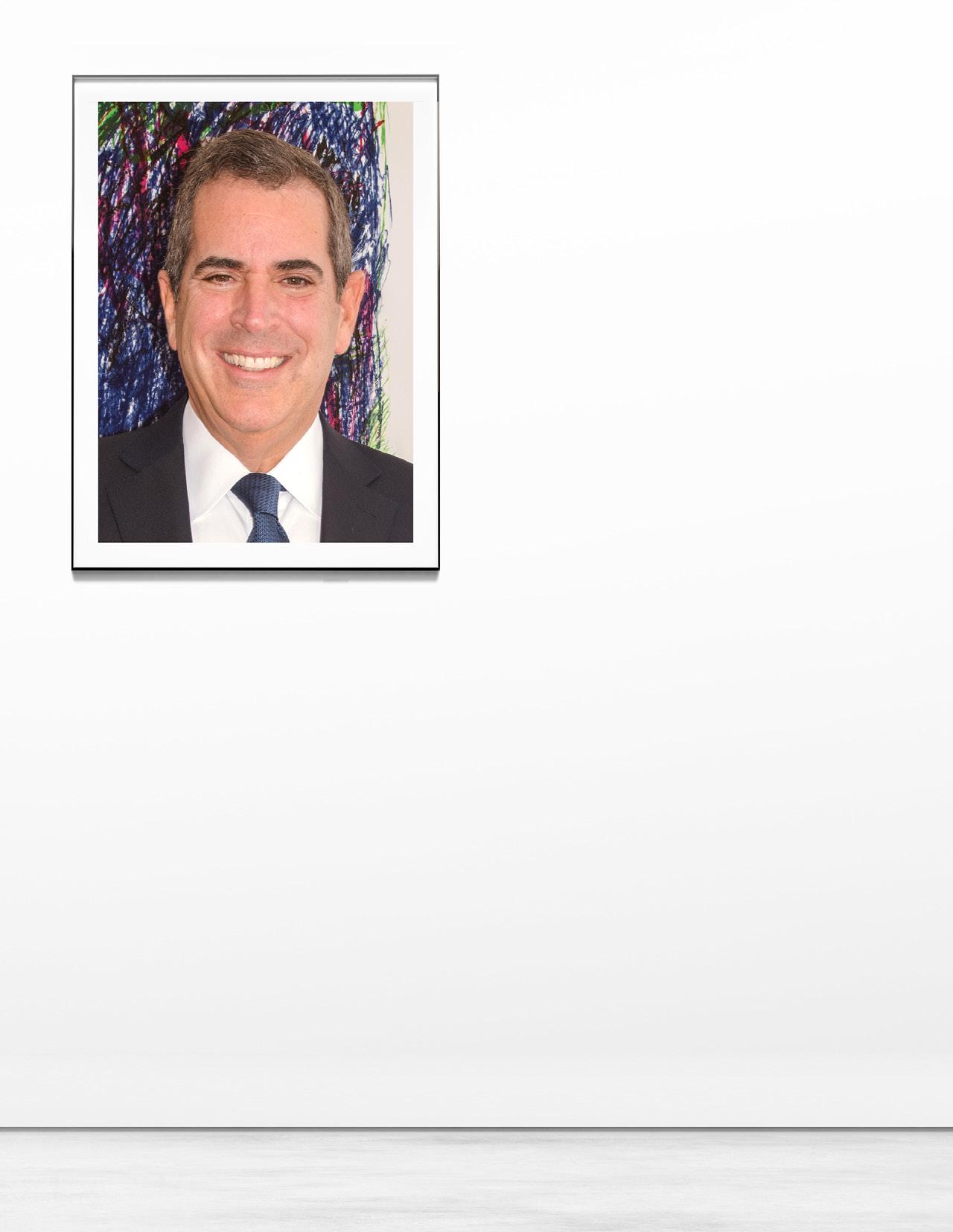
17 minute read
David Djaha Managing Partner, Ropes & Gray
INTERVIEW WITH DAVID DJAHA Managing Partner, Ropes & Gray

Advertisement
When you meet David Djaha, it does not take long to discover how passionate he is—about his family, his friends, the theater, New York City and, of course, Ropes & Gray. The new managing partner of Ropes & Gray is quick to share a story about his sons’ career goals or to reminisce about growing up with his immigrant grandparents. His relationships are the cornerstone of his life and career—which truly go hand in hand with each other.

Joining Ropes & Gray 10 years ago as a lateral partner, David quickly embraced the culture, the friendships and the values of the firm, which align perfectly with his own. Now he is continuing the traditions of the firm and leading it into the next decade with passion and purpose.
How did your childhood shape the person you are today?
My upbringing played a very big role in shaping my interest in real estate and also instilled in me a strong work ethic. My father’s parents were immigrants to the U.S. from Syria, and my father was one of six children, none of whom went to college. They understood the value of education, but it wasn’t really an option for them. They needed to work, so each one of them built a business. It was a very different way to grow up.
I gained an understanding of business because my father was a businessman, and I was exposed to real estate early in my life because my grandfather bought two small buildings in Brooklyn after coming to the United States. There were always conversations about real estate around the table. It was interesting to me, but I admit I never envisioned working in real estate or, quite frankly, heading to law school.

What did you want to be when you grew up? What led you to becoming a lawyer?
In high school, I became interested in commercial art. I wanted to work in advertising and be one of the “Mad Men.” So I decided to study communication design and graphic art in college.
When my friends were graduating from my program and getting jobs at advertising agencies, they were making $12,000 a year. While I wasn’t primarily motivated by money, I did know that $12,000 a year would not allow me to live in New York City, and that was my passion. It was where I wanted to be.

Knowing I loved school, my parents suggested I go to law school. I thought this was the best idea I’d ever heard because it meant I could kick the career decision down the road for three more years. I wish my career planning was more measured and strategic, but it really just fell into place. >>>
That’s how I became a lawyer. When I went to law school, I knew that if I was going to practice, it was going to be as a real estate lawyer, because real estate was something that was familiar to me.
Commercial art is a long way from being a lawyer. Do you employ your artistry in your role? What I loved about graphic art was that it was so intensive. You did everything hand to paper with protractors, rulers and inkwells. I loved it. It might sound surprising, but the creativity translated well into being a lawyer. In advertising, you need to get your client’s message out through design—but how do you do that? It’s about solving a problem. That’s what we do as lawyers—we solve problems. So I get to use that same creative side of my brain here. Also, I do a lot of work with our marketing team. We just designed the logo for our 10-year anniversary in London. So it’s full circle for me, and I love it.
When you graduated from Brooklyn Law School, what was your first job? What was the most important lesson you learned? I got an early offer at a big firm and decided to give it a try. It was definitely eye-opening and intense in a way that I had not anticipated. I never thought I would like big firm life, but once I got into it, I loved the community aspect of it. And to this day, I love the teamwork and community aspects of being at a large firm. I also loved the luxury of being able to focus on just real estate. If I had a tax problem, I could call one of the best tax lawyers in the world and get an answer. The interdisciplinary construct of a law firm really appealed to me. And it motivated me. I rolled up my sleeves and became a solid member of that firm and the firm community. I served on committees and involved myself in the life of the firm because I loved the experience. I got married two weeks before I started working, so I was a young married guy and I wanted to make sure I had a good work-life balance. I pulled all-nighters every Thursday so that I would have more free time on the weekends. That was my routine. I was focused on working hard, but I also wanted to be present for my family. Once I got to my first firm, I knew I wanted to be a law firm partner. I realize that being a lawyer, and especially a lawyer at a big firm, is not for everyone. But I liked practicing law. I liked my clients and the community. The one thing I didn’t think I could do was business development because I wasn’t a salesy kind of person. If I knew coming out of college that I would be a salesperson, I probably wouldn’t have gone into law. But I’ve learned to do it through the years because you have to. And you become more confident if you’re selling a good product. The firms I’ve worked at have been really good firms, so I have been confident in what I’m selling, and I always market in a style that is true to myself. What impressed you about Ropes & Gray and convinced you to move, especially during an economic downturn? The economic downturn was an interesting and precarious time for real estate and for real estate lawyers. I took a meeting with Ropes & Gray’s then head of the real estate group, Walter McCabe, on a lark. It was supposed to be 45 minutes, and it lasted two and a half hours. By the time I left the meeting, I thought, “I can’t believe I don’t work at that firm.” What struck me about Ropes & Gray was the confidence management had in the stability of the firm. We built so much of the firm during and after the recession. It was a smart approach. Ropes & Gray is 155 years old; we knew that one recession was not going to put us out of business, and that confidence came across in the first meeting. When you look at the firm’s growth and the laterals we brought over during the recession, that was a monumental development for this firm. A lot of other firms lost out during that time. Many of them were in hunker-down mode, but we were in growth mode, and it was the right thing to do. It was smart to invest. Ropes & Gray has a special culture. As an example, we have this wonderful tradition, which I thought was quite corny when I first got here: Every December, the entire partnership gets together for a holiday lunch and a miniretreat, or what we call the State of the Firm. My first December, I didn’t want to go—it’s the busiest time for real estate. One of my friends at the firm said, “No, come; you will never regret it.” And she was right, because culturally, it is an amazing event. Partners from all 11 offices gather together in one place. All of our retiring partners give these wonderful speeches. We honor our new partner classes. It is a tradition that says a lot about the firm’s values. In advertising, you need to get your client’s message out through design—but how do you do that? It’s about solving a problem. That’s what we do as lawyers—we solve problems.
During that first State of the Firm, it really hit home that Ropes & Gray was the right firm for me when the chair put up a slide about the recession. It showed how organizations were panicking and cutting back while we continued to invest. It was business; we invested in ourselves. It was calm, confident and forward-looking. And I was impressed by that because it is the way I think. You’re either in it for the long term or you’re not in it at all.
As a lateral partner, you came into Ropes & Gray with your own style and way of doing things. Were your new partners receptive to your ideas, right off the bat? If not, how did you overcome challenges and align their vision with yours?
I had come from a firm where business development was something we focused on from day one of our careers. You woke up in the morning and you thought about business development, whether you were a partner or an associate. That was not as imperative at Ropes & Gray. The quality of our work and the results we were getting for our clients were exceptional. We just weren’t as focused on business development in a programmatic way. So I spent a lot of time with my partners, as well as with our marketing and practice development teams, sharing my thoughts on business development.
I remember putting together a slide show for my practice group, and one of the slides was about the need to think about business development every day. Someone in marketing said to me, “You can’t put that slide up because some partners will feel intimidated.” Fastforward just two years and it was night and day. Today we think about our clients, their businesses and their industries—and how we can help them—all the time.
It’s now a natural part of our culture. Our lawyers combine intellectual capital with business savvy. I think that’s what is exciting about Ropes & Gray because we’re very fluid in our thinking, and we’re able to be nimble in the face of rapidly changing markets.
How would you describe your leadership style?
I manage by consensus. I’ve been really lucky to build brilliant teams around me who are smart, hardworking, dedicated and committed. I value our people, so I want to hear from them. I tell our teams, “We have no secrets other than partner compensation, so ask me what you want to know. I’m asking you to think like a business owner; you need to know the business.” COVER STORY
Top-down is not what Ropes & Gray does. Someone ultimately has to make a decision, so I’m always prepared to make the decision, but I would much rather bring the team to consensus than say, “This is the idea. You all figure out why it’s the right one.”
You had almost two years to prepare to take over as managing partner. What steps did you take to prepare for this role?
Leadership roles at Ropes & Gray hadn’t changed in a long time; the vast majority of our partners had only known being a partner, being a lawyer, under the leadership of Brad Malt and David Chapin. It was important that we transitioned the chair and managing partner roles slowly and thoughtfully.


During the transition, Julie Jones (chair) and I met with Brad and David once a week for two hours and went through everything. We
talked about real-time >>>
issues, discussing how each of us would analyze something and looking at how decisions were made in the past. This was a very thoughtful process.
The other reason why it was very important to have a thorough transition process was that Julie and I both had pretty big practices that we had to transition, and that could not have happened overnight. We are the only two partners without active client practices at the firm, but we’re very client-facing. I maintain my client relationships and I still pitch business, but I don’t read the loan documents or do that type of work anymore because I’m traveling so much on firm business.
I’m glad we had that time. It was necessary so that when January 1, 2020, arrived, I wasn’t even conscious of the formal transition because I’d been doing this for so long.
Now that you are managing partner, what is the strategy ahead? What does the future hold for Ropes & Gray?
We’ve had an amazing trajectory over the past 10 years. We have grown headcount and revenue every single year, including during the recession years.
Julie and I are fortunate to have inherited a firm that’s in great shape, so there are no monumental changes we need to make. We have a great strategy in place that involves staying focused on our clients’ most complex needs, understanding the market and continuing to build our world-class team of lawyers.
It’s an interesting time right now for a global firm. We’re in the U.K., so we’re managing through Brexit; and we’re in Asia, so we’re managing around Covid-19, protests and tariffs. We’re in the U.S. and managing around an election year. That’s tough in and of itself.
But I go back to the confidence thing. We make smart, thoughtful decisions, and we don’t change course because there are going to be recessions, unforeseen challenges and elections. We don’t think we are smarter than the markets, but we have values that we live by, and that’s how we run the firm.
Pro bono work has always been an important part of your career and Ropes & Gray’s values. What motivates you to get involved in the community in such a way?
I’ve done pro bono work since I was an associate, and I have learned a lot of different skills by doing it. My first pro bono client, when I was a first-year associate, was Volunteer Lawyers for the Arts. I’m passionate about the theater—not performing, but attending—and I was helping these notfor-profit theater groups set up their organizational charters and drafting their bylaws. I was learning and getting involved with these groups that needed help. And I was contributing to an industry that was a passion.
I strongly believe you have to pay it forward in that way; it’s the right thing to do. Especially if you have the kind of platform we do at Ropes & Gray. It’s one of our highest priorities to actively contribute to our communities and our profession—or, as we call it, to “practice with purpose.”
In the middle of our busiest month last year, I was negotiating a lease for a women’s shelter in Queens for victims of violence from Southeast Asia. It’s important and it helps me train. I worked with an associate who had never negotiated a lease before; at the end of it, she told me how valuable it was. The client was also grateful.
Pro bono work is embedded in our culture. And it’s one of a number of business priorities that we have to be thinking about every day: We need to be thinking about our clients. We need to be thinking about working hard. We need to be thinking about diversity and inclusion. And we need to be thinking about how we can give back to the community. We are lucky to work at Ropes & Gray, and we can’t forget that.
You mentioned that diversity is something you should be thinking about every day. Why is diversity and inclusion important to you? What are your priorities?
I started my practice in 1988. By 1990, I was already on the diversity committee because I have always been passionate about human rights and equality. The issues we are talking about now are not that different than the issues we were talking about then.
At Ropes & Gray, we have a pretty vibrant, diverse population. It’s nowhere near where it needs to be, but we’re making some progress and are focused on doing better and doing more.
We’re thinking creatively. We have a firstyear summer program that gives diverse law students an opportunity to work here as summer associates. We hope they’ll come back as second-year summer associates. In another program, graduating college students come to work with us before they go to law school to get mentorship.
On gender diversity, we’re also advancing. Our new class of partners this year was 60% women, and across the firm, our partnership is 31% women. We still have work to do, but we’re moving in the right direction.
We’ve expanded our diversity and inclusion support team to help us strategize and implement initiatives that will advance racial diversity, gender diversity and sexual diversity. We have committees and attorney resource groups around the firm that are focused on this.
So much of diversity is about retention. Supporting and mentoring lawyers, making sure they have opportunities to grow professionally and advance in their careers. It’s something we’re very, very focused on—and we have been for a long time.
When you are recruiting new members to your team, what are you looking for? This is going to sound like a catchphrase, but we look for the best in the market. If we’re hiring laterally, your track record and your work ethic are top of mind to us. We have market-leading training programs focused on developing Ropes & Gray lawyers—which, in our minds, means lawyers who are the best in the world at what they do and who embody our standards of excellence, mutual respect and collaboration. We’re looking for hardworking, smart people who think beyond just their legal books. We train our associates to develop relationships. We model that behavior for them. That’s really important here.
Smart lawyers are a dime a dozen.
What’s your value proposition? You have to show me more than
confidence and motivation. This is a hard job. Anybody who comes into it and thinks it’s not a hard job shouldn’t be doing it. For lateral partners, we don’t buy books of business. I look for people who have market recognition and who I know will do well on our platform because of their expertise. I look at their clients; there has to be an alignment. If you’re representing clients similar to ours, it shows me where you position yourself in the market. I think that helps laterals be successful here. Also, we hire people who think collaboratively. We have a black box compensation system, which isn’t for everybody, but it is for people who are collaborative thinkers and who trust that they will be treated fairly. One of the real drivers of this firm is our collaboration. Fitting into this culture is at the top of our checklist.
How have you approached retention? Our lawyers like to be busy and to be working on the most complex matters in the market. That helps to keep them here. We have a great firm culture; we keep people here by empowering them, by supporting them and by making sure that they are networked. Every six months, I meet with the lateral associates who joined during the prior six months. I think it’s really important for them to get to know and have open communication with management. We do small group meetings with lateral partners so that we can share ideas. If I have all of these interesting, smart, accomplished lawyers coming to our firm, it would be a wasted opportunity not to learn from them. So we’re constantly trying to learn from our laterals. It makes sense because everybody brings something with them. That’s the point. We want them to feel like they have a say here. It’s empowerment that is really important to me, and it’s only through communication and recognition that you can really inspire people. We have smart, motivated people. We’re doing the best work in the world, and we happen to do it in an atmosphere that people want to be in. We wouldn’t be keeping our people if our firm wasn’t doing well—and we’re doing exceedingly well.
What advice do you have for aspiring leaders? My advice to aspiring leaders comes straight out of Hamilton: talk less, smile more. You have to inspire people through your actions. When I was first appointed managing partner-elect, I spent that year having lunch or dinner with every partner in the firm. I wanted to know what was on their minds and I wanted to start a conversation about what’s important to them. Listen to the people you have to inspire. Just because you set a goal doesn’t make it their goal. COVER STORY So much of diversity is about retention. Supporting and





